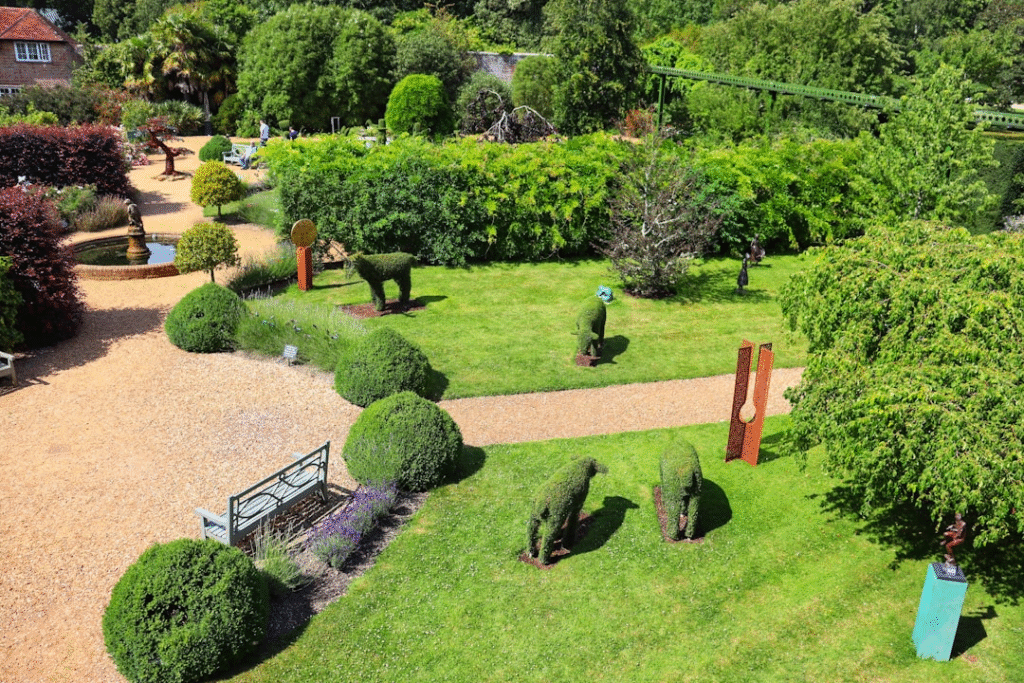A well-maintained garden speaks volumes before a word is said. It reflects patience, care, and a connection with the natural world. Whether you tend to a small backyard or a sprawling front lawn, your garden can become a source of pride and peace with the right strategies. It’s not about extravagance, it’s more about intention, consistency, and knowing where to focus your energy.
Even modest changes can elevate a garden’s appearance and make it more enjoyable for everyday use. With clear goals and simple techniques, your outdoor space can become a beautiful extension of your home.
Start With Strong Structure
Every great garden begins with a well-defined layout. Beds, paths, borders, and open spaces should feel intentional and balanced. Without structure, even the most colorful plants and elegant features can feel lost or cluttered. Structure is functional, and not just visual.
Pathways make movement easier and protect grass and soil from being worn down. Borders contain growth and define zones within your space. Use edging or natural barriers like hedges or stones to bring clarity and organization. A clean layout provides a foundation for everything that follows and sets the stage for a cohesive design.
Make the Lawn a Focal Point
Lawns, when healthy, create a fresh and unified backdrop for your garden features. A well-kept lawn invites guests in and makes the entire yard feel polished. To achieve this, it’s worth investing time in mowing, fertilizing, and spot-treating as needed. A consistent routine prevents patchiness, supports root health, and maintains strong color throughout the seasons.
The tools you use play a role in both appearance and efficiency. For instance, choosing the right electric lawn mower for your property can make maintenance faster, quieter, and more environmentally friendly. A well-designed mower offers even cuts, easy handling, and reduced emissions without compromising power. Using one ensures your turf stays consistent and clean without disrupting the tranquility of your outdoor space.
Choose Plants With a Purpose
When selecting plants, think beyond appearance. Consider what each plant offers to the garden as a whole. Some contribute seasonal color, while others bring texture, shade, or scent.
Think in layers. Taller plants should go toward the back or center, with mid-height and lower varieties filling in the gaps. This helps create visual movement while ensuring all plants receive appropriate sun and air. Plants that serve multiple functions, such as attracting pollinators or offering erosion control, increase the impact of each addition.
Plan for Year-Round Appeal
Many gardens peak in spring or summer, only to feel lifeless the rest of the year. Planning for all seasons helps keep your space interesting and vibrant even when temperatures drop. Evergreen shrubs, ornamental grasses, and structural features like trellises or containers ensure visual interest every month.
Color isn’t limited to blooms. Foliage, bark texture, and seed heads offer contrast and character during quieter seasons. The more your garden offers across the year, the more value you get from the effort you invest.
Keep Beds Weed-Free and Well-Defined
Few things disrupt the look of a garden faster than neglected beds. Weeds compete with desired plants for nutrients and water. They also signal to visitors that the garden is being overlooked. Mulch serves as a simple solution, helping to block weeds, retain moisture, and enhance visual appeal.
Edges matter. Neatly trimmed bed borders keep lines sharp and support the sense of order. Regular attention, even in ten-minute intervals, keeps growth in check and encourages stronger, healthier plants. Taking care of the small details protects the larger investment of time and energy you’ve made.
Add Features That Reflect Personality
A garden becomes more meaningful when it reflects the personality of the people who use it. Decorative pieces, bird feeders, or handmade signage can bring charm and uniqueness. Even practical additions like raised beds, compost bins, or small seating areas can be arranged creatively to add interest.
These features work best when they blend with the surroundings. Natural materials, weathered finishes, and neutral tones integrate well without overpowering the greenery. When done right, these touches become talking points and make your garden feel like a lived-in, loved space.
Use Lighting to Extend Enjoyment
Gardens don’t need to disappear at night. Well-placed lighting can enhance safety and add drama to focal points after sunset. Soft lighting around paths, seating areas, or feature plants encourages evening use and highlights the landscape’s depth.
Solar options make it easy to install lighting without extensive wiring. String lights, stake lights, or lanterns can all be incorporated with minimal effort. Thoughtful illumination extends the garden’s function and makes it a place to relax well beyond daylight hours.
Refresh Containers and Planters
Containers bring flexibility and color into areas where traditional beds aren’t practical. Whether placed on patios, entryways, or tucked between larger plants, they add layers and allow for seasonal rotation. You can refresh them easily to suit different holidays, growing conditions, or aesthetic goals.
Make sure containers have proper drainage and are sized appropriately for the plants they hold. Overcrowded pots or those lacking drainage often become breeding grounds for disease or stunted growth. Rotating the contents keeps things interesting and lets you experiment without committing to full replanting.
Gardens grow better when built with patience and purpose. Each improvement, whether structural, visual, or practical, builds toward a space that reflects care and pride. When attention is given to layout, health, and personal touches, the entire environment benefits. A beautiful garden is never finished, it’s always in progress, and that’s what makes it worth the effort.






